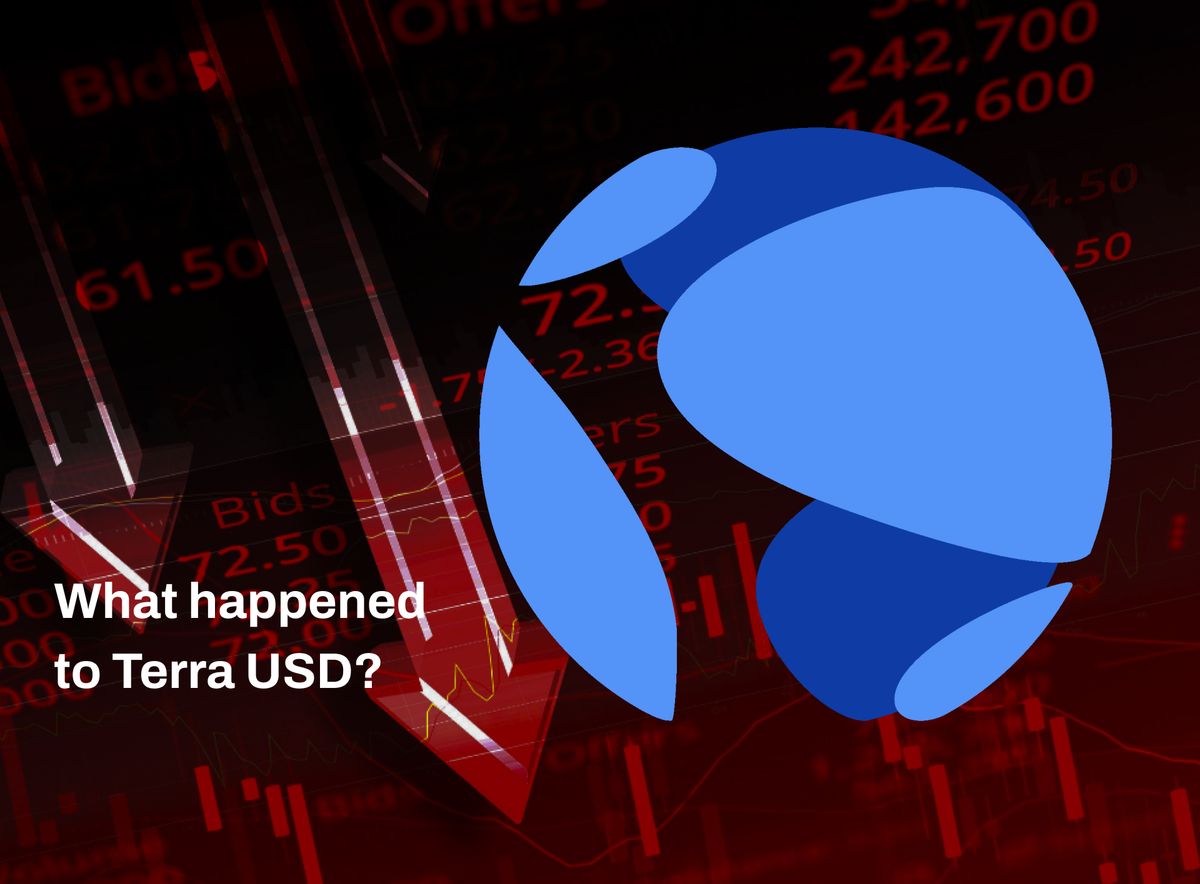Stablecoins After the TerraUSD Crash: What’s Next?
The TerraUSD crash shook the stablecoin market. What happens next for stablecoins and crypto in general?

A Stablecoin is a cryptocurrency that has its value pegged to an asset class like fiat currency or gold to keep its price stable. Stablecoins are created to counteract the price fluctuations in crypto trading by linking their value to that of an asset like gold or the dollar that is prone to less unpredictable changes in price.
There are different types of Stablecoins based on the type of collateral used to back them, and the following are the most common:
Fiat-backed Stablecoins: For fiat-backed Stablecoins, the creator or team behind it will establish a reserve where a particular amount of the asset collateral for the Stablecoin is stored. These reserves are maintained by independent trustees and are frequently audited to ensure compliance with regulatory requirements. Tether (USDT) and USDC are commonly traded Stablecoins that have a value equivalent to 1 U.S dollar; this means 1 USDT = $1 and 1 USDC = $1.
Commodity-backed Stablecoins: These are Stablecoins backed by commodities like real estate or precious metals like gold or silver to help them maintain their value. An example of a Stablecoin backed by gold is Digix.
Crypto-backed Stablecoins: These Stablecoins are backed by other cryptocurrencies. Since the cryptocurrency used as a reserve may be susceptible to heightened volatility, crypto-backed Stablecoins are typically over-collateralised. This means that a larger amount of cryptocurrency tokens are stored in reserve for distributing a smaller amount of these Stablecoins. An example of a popular crypto-backed Stablecoin is DAI. It runs on the Ethereum blockchain, and its value is pegged to the U.S. dollar.
Algorithmic Stablecoins: These Stablecoins utilise a computer algorithm to stabilise their value. For instance, if the price of an algorithmic Stablecoin is tied to $1, but the Stablecoin increases in price, the algorithm automatically issues more tokens into the supply chain to lower the price. In the same vein, if the price falls lower than $1, the algorithm will reduce the supply to raise the price back up.
Why was Stablecoin TerraUSD (UST) Depegged?
On Monday, 9th May 2022, TerraUSD (UST) fell from $1 to $0.2998 after it was depegged. UST is an algorithmic Stablecoin supported by a system where traders swap between UST and LUNA when the value of UST goes under or above the 1:1 ratio to preserve its stability and equality to dollar value. Each time $1 worth of LUNA is burned, $1 worth of UST is bought, and vice versa.
Burning in crypto trading means removing tokens from circulation to balance demand and supply. In the case of UST, burning lowers supply to keep the token valuable and stable. Unfortunately, a significant amount of capital was pulled from UST after arbitrageurs sold LUNA. As a result, UST fell heavily and affected the whole crypto market.
Before it crashed on Monday, UST was one of the biggest Stablecoins, and it was never meant to fall from its equivalent dollar value. However, Do Kwon, the founder of Terraform Labs (TFL), the organisation backing UST and Luna Foundation Guard (LFG), has announced a strategy to pull the Stablecoin back up.
In a tweet, he stated, "I understand the last 72 hours have been extremely tough on all of you — know that I am resolved to work with every one of you to weather this crisis, and we will build our way out of this, together." He also said, "Before anything else, the only path forward will be to absorb the Stablecoin supply that wants to exit before $UST can start to repeg."
Luna Foundation Guard (LFG) is currently negotiating to raise over $1 billion from investors. The inventors will buy LUNA tokens at a 50% discount with a two-year vesting schedule. But seeing as LUNA has crashed beyond the value it was being positioned at, it is unsure if the investors will follow through with the deal.
At the time of writing this article, LUNA was trading at $0, and TerraUSD (UST) was trading at $0.1.
The Possible Future of Stablecoins
With TerraUSD and its depegged situation, the unreliability of algorithmic-backed Stablecoins has become more apparent. It has also highlighted the need to tighten up the structure of Stablecoins.
Another thing to consider is the regulations being deliberated on by market powers such as the U.S. government. These regulations will affect not just Stablecoins but other cryptocurrencies as well.
Currently, the regulations are at the point of definition. That's to say, the economists and financial governing bodies are still deciding what asset class to place Stablecoins in. Will Stablecoins be categorised as securities or currency? How are they going to be taxed? What measures will be implemented to cater to losses like the TerraUSD crash?
Stablecoins have the potential to become one of the strongest pillars of not just the cryptocurrency market but finance in general. This is because they can be used (and are used) like fiat currency to conduct transactions. They have grown in popularity over the past years and, till now, shown little sign of slowing down.
Stablecoins are not likely to fade away from mainstream crypto trading. If anything, they can become more robust assets provided the cryptocurrency ecosystem applies the innovation they are known for to restructure Stablecoin as a concept and a currency.
Disclaimer: This article was written by the writer to provide guidance and understanding of cryptocurrency trading. It is not an exhaustive article and should not be taken as financial advice. Obiex will not be held liable for your investment decisions.




